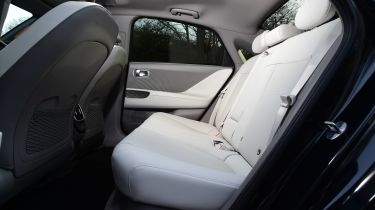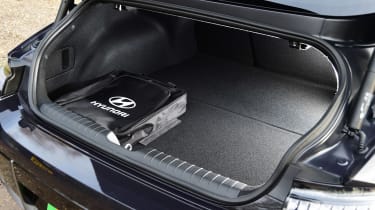Hyundai Ioniq 6 review: boot space, seating & practicality
The Hyundai Ioniq 6’s sloping roofline compromises practicality somewhat, but it’s still roomy enough for most families
The Hyundai Ioniq 5 offered plenty of interior space thanks to its boxy shape. However, the Ioniq 6’s sleek saloon silhouette means that practicality is somewhat compromised compared to its hatchback sibling. The 6 is by no means an impractical car, but if you’re looking for outright versatility, there are much more spacious options out there in the premium EV market.
Hyundai Ioniq 6 interior space, storage & comfort
One drawback of the Ioniq 6’s sloping roofline is headroom. Anyone over six feet tall might find themselves brushing against the headliner, especially in the rear, though we found this was an issue even in the driver’s seat, too. Legroom on the other hand is extremely generous all around, thanks to the electric saloon’s 2.95-metre wheelbase, which is roughly the same as that of a BMW 5 Series.
Each front door has a decent-sized door pocket with a cutout to house a water bottle. The front seats can also be reclined if you so wish to allow you to relax and even take a nap whilst you wait for your car to charge.
Boot space
Unlike a BMW i4 or Polestar 2, the Ioniq 6 doesn’t feature a hatchback-style tailgate, instead you get a somewhat oddly shaped opening. The 401-litre luggage capability is decent enough, and there’s a 41-litre frunk under the bonnet in rear-drive models – handy for your charging cables. However, if you go for the all-wheel drive version that’s reduced to a mere 12 litres, and overall the Ioniq 6’s rivals have much more cargo space, especially the Model 3.





